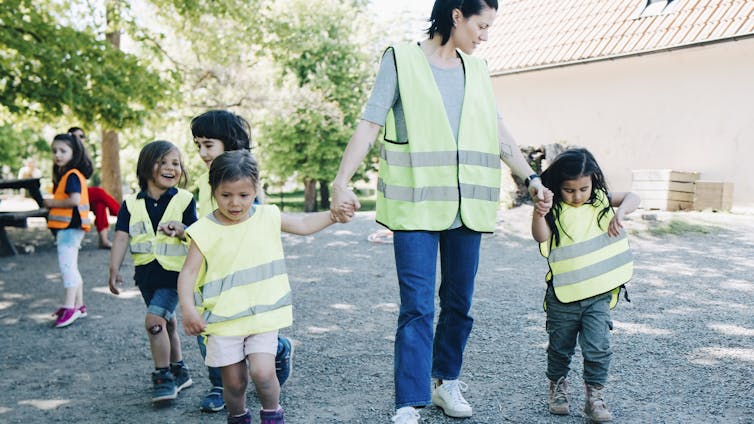
31 Jul Childcare centres will have funding stripped if they’re not ‘up to scratch’.
Is this enough? Asks Erin Harper
Childcare centres will lose their eligibility for fee subsidies if they don’t meet safety standards, according to a new bill introduced to parliament this week.

As Education Minister Jason Clare told parliament:
it will give us the power to cut off funding to childcare centres that aren’t up to scratch.
The bill follows recent allegations that a Victorian childcare worker abused children in his care. There have also been allegations of abuse in centres in New South Wales and Queensland. Labor has warned lower house MPs they can expect late nights next week, to try to get this bill and the government’s plan to cut HELP debts through parliament.
What’s in the bill? What does it mean for families? And what’s missing?
What’s in the bill?
Clare told parliament the federal government’s childcare subsidy currently covers about 70% of the average cost of running a centre.
This legislation gives the federal education department the power to suspend or cancel that funding if a centre “is not meeting the quality, safety and other compliance requirements,” according to the national system of early childhood regulation.
The department could also stop a childcare operator from opening a new service if there are problems with existing services.
It applies to all types of early childhood services, from daycare centres to family daycare, as well as before- and after-school care.
The federal education department will also have new powers to do spot checks in services (this is on top of state authorities, who can already do checks).
There are strong, new measures
It is positive to see strengthened measures to take a provider’s track record into account before saying “yes, you can open another service”. This is a slightly more proactive measure, in addition to punishments for services that do not comply.
We are also seeing more transparency. The bill will provide new powers to publicise when a provider is refused approval for a new service.
It can also publish other compliance actions taken against providers, such as when conditions are applied, and the details of those conditions. Or if a fine has been imposed.
This means that families and the broader public—including shareholders—will also be more aware of what is happening in childcare services.
Is this enough?
While the Coalition and the Greens are broadly supportive of the bill, they also want to see further changes.
Clare told parliament the bill is not the only measure the federal government is taking on childcare standards.
State and federal education ministers are due to meet next month to discuss child safety. This includes a national register to track early childhood workers from centre to centre, mandatory “child safety training”, CCTV for centres and other recommendations from the recent Wheeler review on the NSW early childhood sector.
Attorneys general will also meet next month to discuss how to improve working with children checks.
What about the impact on families?
We also need to consider the practical implications of the bill. If the childcare subsidy were removed from any service—whether private or not-for-profit—it would quickly become unviable.
Without the subsidy (which reduces out-of-pocket costs for parents), many families would not be able to afford childcare.
If a service is going to have access to the subsidy taken away, how much notice should families get? These details need thoughtful consideration.
If the federal education department is going to have a team of people doing checks on services, we also need to ask, how will this work? How quickly will they be able to do these checks? One of the issues with the current system is that there are long delays between assessments. This suggests it will need careful planning, and it will also cost some money.
The bigger picture
Beyond these questions, there is the bigger picture of childcare quality in Australia. The system is complex, but the people who educate and care for children are at its heart.
My recent research has revealed that educators are only spending 30% of their time on undistracted and uninterrupted time with children. This is due to the heavy and sometimes competing demands of their work, including administrative and cleaning duties. Educators say this diminishes their capacity to provide quality education and care.
Heavy and distracting workloads, along with widespread reports of understaffing and breaches of minimum staff-to-child ratios, make it difficult for educators to keep children safe.
So, meaningful reform must consider educators’ experiences and include strategies to increase support for educators to do their jobs effectively.![]()
Erin Harper, Lecturer, School of Education and Social Work, University of Sydney
This article is republished from The Conversation under a Creative Commons license. Read the original article.



